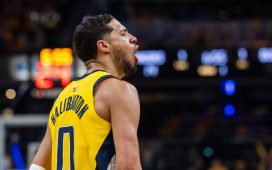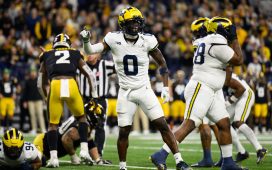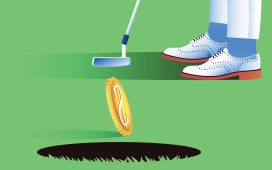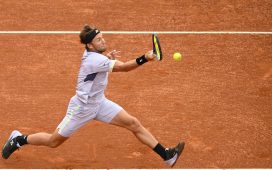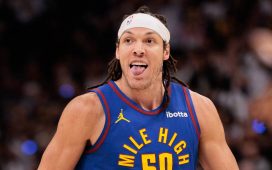By the time he was 20, Simon Pagenaud, the son and grandson of grocers, had been in charge of several departments — video games, produce, cheese — at the family’s E.Leclerc supermarket in Montmorillon, France, his hometown.
Pagenaud, who had competed in a Formula Renault as a teenager, wanted to race cars for a living, but his family did not have the money or the contacts for such a passion. Christian Pagenaud, his father, did not want to hand Simon a blank check to race, either.
“You’ve got to have partners to finance you, buy your way in,” Simon Pagenaud said in an interview after winning his first Indianapolis 500 in May. “That’s the only way you can make it to the top. Once you’ve shown your potential, then you might become a professional. I basically had to find money to go racing at a high level with the best teams. My dad said: ‘You can’t just go to people and ask for money. It’s not going to work. You’re going to have to find sponsors.’”
With input from his father, Pagenaud decided the best way to raise money was to start his own racing school for business owners at his home racetrack, Circuit du Val de Vienne, about 25 miles southwest of Montmorillon and 250 miles southwest of Paris.
Pagenaud, 35, is now in his fifth season driving Indy cars for Roger Penske, for whom Pagenaud won the 2016 series championship. But Pagenaud has made it clear that he never would have made it to Victory Circle in Indianapolis without the driving school.
“It would have been impossible,” he said. “Racing is too expensive. Cars are too expensive to run. Engineers are expensive to hire. Tires are expensive. It just costs a lot of money.”
For his school, Pagenaud mostly rented Formula Renaults, which look like Indy cars, but he also had Ferraris, Lotuses, BMWs and Porsches. His clients, mostly associates of his father’s, were not interested in pursuing driving careers as much as they wanted a day at the track.
Jean-Hubert Bussac, the track’s director, wrote in an email from France that Pagenaud had about 15 of these track days per year, with 15 to 30 students per class. He did a briefing on safety and technique, then the students did four or five rounds of the circuit.
“Simon corrected their trajectory, their braking, the way they accelerated,” Bussac said. “He knew them all by their first name and always had a smile to talk to them. Each day always ended with a passenger ride on Simon’s Lotus or a Porsche 996 Cup, often until nightfall. Simon also developed exercises to understand how grip works and also sessions to learn how to glide with a car.”
By 2006, Pagenaud had 350 clients. He was able to push some of the money that he made at the driving school into an account that could fund his driving career. He then joined Team Australia in the Champ Car Atlantic series in North America, winning the championship.
Pagenaud drove 14 races in 2007 in the Champ Car World Series, the bitter and underfunded rival of the Indy Racing League. The Champ Car Series folded and was merged into the I.R.L. in 2008.
With support from Gil de Ferran, the 2003 Indy 500 winner, Pagenaud raced sports cars for three years in the American Le Mans Series, also driving four times in the 24 Hours of Le Mans, 140 miles north of his hometown. Then he got a full-time ride in the IndyCar Series with Schmidt-Hamilton Motorsports, winning four races in three years.
Pagenaud caught the attention of Penske, who hired him in 2015, then won five races and a series championship in 2016. But he did not win a race in 2018, and speculation (since knocked down by Penske) swirled that the team would look for another driver in 2020.
Pagenaud’s fiancée, Hailey McDermott, a native of San Diego, said Pagenaud struggled with the new aero kit introduced in the series last year.
“The biggest thing in these cars is that you have to be comfortable, and if you’re not comfortable, the results aren’t going to be there,” she said. “He worked really hard — tirelessly — last year to get his car to the point where he could feel confident and comfortable in it. Now he’s done just that. But Simon never gave up. He’s always pushing hard.”
Pagenaud has two wins this season and was third in the driver standings heading into Sunday’s race at Road America in Wisconsin.
His mother, Sylvie, attended his Indianapolis 500 victory, but his father stayed in France. McDermott explained with a smile: “He’s very afraid of the Indianapolis Motor Speedway, which I understand.”
But his father, who speaks no English, played an important role in Simon’s victory. According to Bussac, Christian Pagenaud “is demanding.”
He added: “His great quality is that he trusts you, and it’s up to you to prove your qualities through your work. I think he applied this rule for Simon. Many parents simply give money. Christian gave Simon an education, methods and above all, he trusted him. Simon traveled hundreds of thousands of miles to find partners. Christian built his company with a lot of work, a lot of courage. He is an example to Simon, and we know that Simon is a tireless worker.”
Pagenaud said he was a long way from being finished as a driver. He would love to win the IndyCar Series championship this year and at least one more Indy 500. He said he felt as if he had conquered a mountain, but from that summit he saw other mountains he wanted to climb.
But McDermott said Pagenaud also wanted to do something else in the United States: start a driving school the way he did in his hometown 15 years ago.
“He talks about it all the time,” she said. “That’s one of his favorite memories, and still one of his favorite things to do — teaching other people how to drive. Where he’s from, friends and family would come from all over just to be able to drive with him.”
